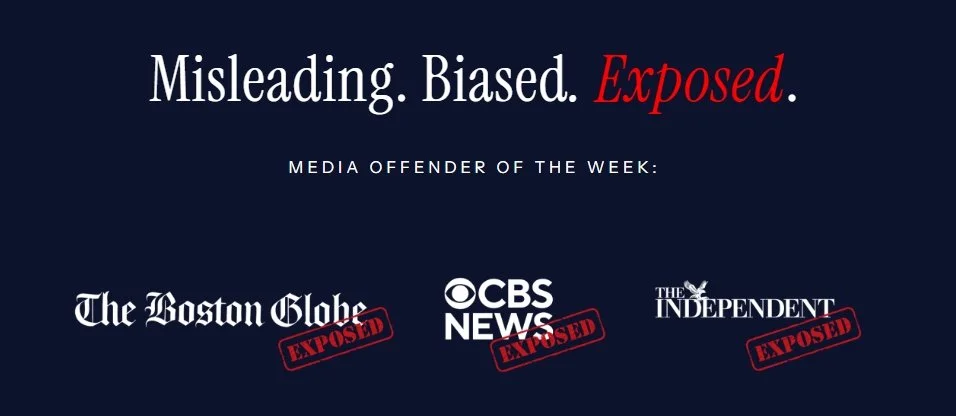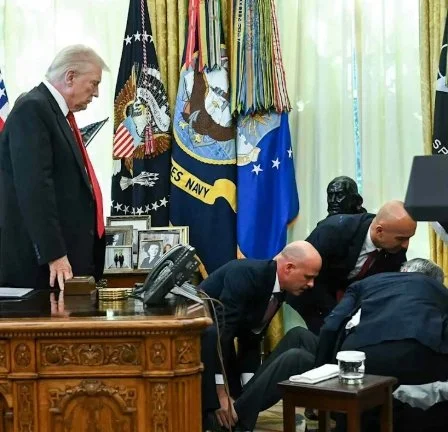Political Violence in America: Beyond Partisan Blame Toward a Cultural Diagnosis
Whenever an act of political violence occurs in the United States, the immediate reflex is partisan: Democrats point to the right, Republicans point to the left, and both frame the event as evidence of the other side’s moral rot. While it is true that in recent decades a disproportionate share of extremist killings and planned attacks have been linked to right-wing movements, psychology cautions us against the simplicity of assigning violence to one political faction. Instead, we must understand political violence as a symptom of a wider cultural environment: one that fosters grievance, amplifies outrage, and makes violence appear—at least to a tiny minority—like a meaningful solution.
The Psychological Foundations of Political Violence
Psychological research on radicalization and political violence identifies several consistent mechanisms:
Relative Deprivation and Grievance
Individuals are more likely to support or commit violence when they feel their group is losing out unfairly, even if their absolute circumstances are stable.
U.S. political discourse, infused with “zero-sum” narratives about identity and rights, heightens this perception across the spectrum.
Moral Disengagement (Bandura, 1999)
Violence becomes possible when perpetrators reframe it as morally justified. Labels like “traitor,” “fascist,” or “evil” make the target less human and violence seem righteous.
Both left and right use moralized language that paves the way for dehumanization.
Identity Fusion and Group Belonging
People who see their personal identity as inseparable from their political group are more willing to sacrifice, even violently, for that cause.
In the U.S., political identity has fused with cultural, racial, and religious identity, creating high-stakes conflicts over symbolic figures like Trump, BLM leaders, or conservative activists.
Contagion and Copycat Effects
Acts of violence can inspire others through media amplification. Research shows mass shootings and terror attacks often cluster due to imitation.
Social media accelerates this process, allowing grievances, manifestos, and even live broadcasts of violence to spread.
The Role of Partisan Polarisation
It is empirically correct that most fatal extremist violence in the U.S. since 1990 has been committed by actors on the far right. But the exclusive focus on “which side is worse” risks obscuring the deeper cultural currents that make violence appealing.
Cognitive Biases: Humans exhibit motivated reasoning—we see violence by our side as anomalous or justified, and violence by the other side as proof of their depravity.
Polarised Information Ecosystem: Both mainstream and fringe media stoke outrage to drive attention and engagement, fueling what psychologists call “affective polarization” (the sense that the other side is not just wrong but evil).
Shared Cultural Norms of Violence: American history is steeped in political violence—from the Civil War to labor conflicts to civil rights struggles. The cultural script that violence is a legitimate form of political expression remains available, even if condemned.
Wider Cultural Drivers
Political violence does not arise in a vacuum. Several features of U.S. culture and society create fertile soil:
Gun Saturation
Easy access to firearms turns grievance into lethal action. The psychological leap from anger to action is lower when weapons are ubiquitous.
Entertainment and Media Frames
U.S. media culture glorifies violence in films, games, and political rhetoric. Heroes are often those who take matters into their own hands, a narrative that legitimizes vigilantism.
Social Media Amplification
Algorithms reward outrage, conspiracy, and dehumanization. While not every user radicalizes, those already primed for grievance can quickly find validation and community.
Erosion of Trust
Declining trust in institutions, experts, and mainstream media means that alternative narratives—sometimes conspiratorial—gain traction. Psychological studies show that low institutional trust predicts openness to violence.
Cultural Individualism
The U.S. cultural emphasis on individual heroism and distrust of government can transform grievances into violent crusades, where the lone actor sees himself as savior.
Why “Finger-Pointing” Fails
When each act of violence is interpreted only as proof of the opposing party’s malignancy, society misses the underlying dynamics. This moral tribalism:
Reinforces identity fusion and makes compromise impossible.
Ignores that both sides share responsibility for inflamed rhetoric and a culture that valorizes struggle as existential.
Prevents collective solutions—such as media literacy, responsible reporting, and community interventions—that could reduce violence regardless of ideology.
Leadership, of course, plays a central role in whether these cultural vulnerabilities ignite. In recent years no figure has demonstrated this more clearly than Donald Trump
Trump as a Consistent Amplifier of Political Violence
If culture provides the fertile ground for political violence, leadership often supplies the accelerant. Donald Trump’s rise and presidency offer a clear example of how rhetoric, framing, and strategy can dangerously fan the flames of extremism—sometimes even producing violence from both ideological poles.
The Rhetorical Playbook
Trump’s political style relied on a language of threat and combat. He cast political opponents not merely as rivals but as existential enemies—“radical leftists,” “traitors,” “enemies of the people.” This is a classic example of moral disengagement: once opponents are depicted as less than legitimate, violence against them feels more justifiable. His frequent encouragement of physical aggression at rallies (“knock the crap out of him,” “I’ll pay your legal fees”) normalized the idea that politics is a battleground, not a civic forum.
Effects on the Right
The most obvious impact has been within Trump’s own base. The January 6th attack on the Capitol stands as the clearest case where his rhetoric, refusal to accept electoral defeat, and mobilization of grievance directly contributed to violence. Research on “charismatic authority” shows that when a leader models defiance of norms, followers become more willing to do the same—sometimes with violence.
Effects on the Left
Paradoxically, Trump’s rhetoric has also fueled anger and radicalization among some on the left. By consistently portraying progressives as villains and undermining democratic norms, he created an atmosphere of existential fear. Psychological studies of reciprocal radicalization show that extremism on one side can strengthen extremism on the other, as each perceives itself as defending against a grave threat. Thus, Trump’s divisive politics not only emboldened violent elements on the right but also heightened the likelihood of reactive violence from the left.
Republicans Deserve Better
Republicans, as a party and as a tradition, deserve more than a leader who fuels violence and undermines democratic norms. Historically, conservatism has stood for stability, civic order, and respect for institutions. Trump’s approach has eroded those values, replacing them with grievance politics, personal loyalty, and incendiary spectacle. The result has been not only reputational damage to the party but also a political culture more hospitable to violence.
A healthier Republican leadership could defend conservative principles without stoking existential dread or normalizing aggression. Such leadership would recognize that violent polarization threatens not just opponents, but the very system that allows a democratic right and left to coexist. By rejecting the politics of perpetual crisis and violent insinuation, Republicans could reclaim their tradition as a stabilizing force in American democracy.
Toward a Cultural Response
If political violence is culturally embedded, solutions must go beyond partisan blame:
Shift Media Incentives: Encourage responsible reporting that minimizes contagion effects, and hold platforms accountable for algorithmic amplification of extremism.
Promote Civic Education and Dialogue: Teach skills for perspective-taking, critical media consumption, and conflict resolution.
Rebuild Institutional Trust: Transparency, fairness, and accountability in governance reduce the appeal of alternative conspiratorial narratives.
Address Grievances: Economic precarity, racial inequity, and cultural dislocation are fertile ground for radicalisation. Policy reforms that improve material security reduce susceptibility.
Cross-Partisan Norms Against Violence: Political leaders must consistently condemn violence—even when perpetrated by their “own side”—to reset cultural norms.
Simply Put
Pointing fingers may win headlines, but it will not heal the culture that makes violence thinkable. Only a shared commitment to de-escalation, accountability, and civic trust can. Political violence in America is real, rising, and dangerous. It is true that much of the recent violence has emerged from the far right, but to stop at partisan blame is to miss the deeper reality: a culture of grievance, outrage, and easy access to violence that affects the whole society. Psychology reminds us that violence emerges where grievances are moralized, identities are fused, and opportunities exist. If the U.S. continues to treat each incident as proof of the other side’s guilt rather than a symptom of shared cultural conditions, the cycle will deepen. Only by addressing the cultural ecosystem—media, rhetoric, trust, weapons, and identity—can America hope to reduce the appeal of political violence across the spectrum.
References
Bonus Op-Ed RANT: Violence, Hypocrisy, and the Trump Administration’s Double Standard
The Trump administration has never been shy about blaming political violence on anything that aligns with their ideology. Following the assassination of conservative activist Charlie Kirk in September 2025, the administration struck a familiar pose: pointed comments at the ‘radical left’, but in all the fanning of the flames there was a notable few who declared that “violence has no place in a democracy”. On its face, such rhetoric sounds principled. But when set against the administration’s own actions abroad, it collapses into glaring hypocrisy.
Barely a week before and after Kirk’s killing, U.S. forces under Trump’s command launched strikes on boats in international waters, killing more than a dozen people. Officials justified the attacks by invoking the language of national security. Yet no clear evidence was offered that the vessels carried drugs. No judicial process was followed. No accountability mechanisms reassured the public that lethal force was proportionate or even legal. These were, by every measure, extrajudicial killings; violence justified not by law, but by fiat.
Here lies the double standard, naked and undeniable. When a lone gunman uses violence against a political figure, the act is condemned as an existential threat to democracy. When the state unleashes missiles from the sky, killing alleged traffickers with no trial, no evidence, and no due process, the act is reframed as “defense,” “security,” or “justice.” The message is clear: violence is intolerable when it challenges those in power domestically, but perfectly acceptable when wielded by those same leaders.
This is not just hypocrisy; it is cynicism weaponized. The Trump administration insists that democracy cannot function under the shadow of political violence, but simultaneously exports violence as a tool of policy. It mourns deaths when they are politically inconvenient, but justifies deaths when they can be further political ambition. Actions speak louder than words and the actions here reveal contempt for the very principles the administration claims to uphold.
The danger is not only moral but practical. Each time the U.S. claims one standard for its citizens and another for its enemies, it undermines the credibility of democratic values themselves. How can America preach nonviolence to its people when its government selectively glorifies violence? How can it demand respect for law when they themselves trample the law of nation?
The assassination of Charlie Kirk was tragic, and rightly condemned. But so too were the U.S. strikes that killed more than a dozen human beings at sea, absent proof, absent trial, absent justice. To decry one while celebrating the other is not leadership. It is moral bankruptcy. It is the triumph of power over principle. And it shows, more clearly than any speech, that under this administration democracy’s highest ideals are not values to be defended, they are talking points to be discarded when inconvenient.






